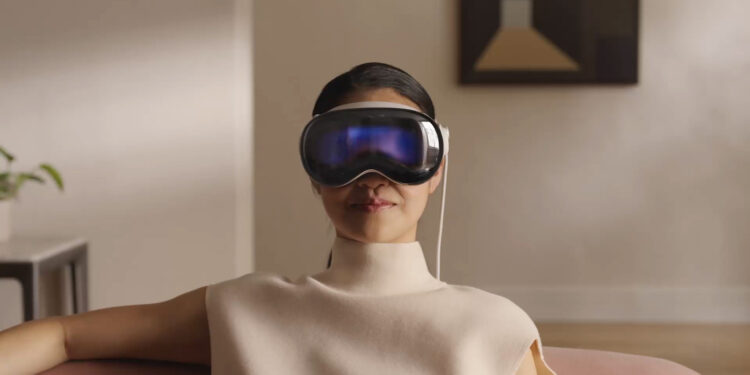The Apple Vision Pro headset is a technological marvel that takes virtual and augmented reality to new levels. But despite its impressive features, there is one aspect that frustrates many users: comfort. The weight and heat generated by the device can be uncomfortable during prolonged use. However, Apple may have found a solution. A new patent describes innovative ways to improve comfort.
If you've tried the Apple Vision Pro before, you know how exciting virtual reality can be. But you may also be familiar with the feeling of pressure on the cheeks and nose, which can become uncomfortable after a while. Apple has recognized this problem and is working on a solution. The recently granted patent promises a revolutionary improvement in comfort by optimizing weight distribution and automating the adjustment process. Immerse yourself in the world of innovation and find out how Apple wants to make the Vision Pro experience more pleasant for you.
The current status: Comfort problems of the Apple Vision Pro
The Vision Pro is a remarkable device, but its weight can become noticeable after prolonged use. Some users report feeling pressure points and discomfort after about an hour of use. Apple has recognized this problem and filed a new patent detailing how comfort could be improved.
The challenges of head-mounted devices
In the patent, Apple admits that the current approach of enclosing the user's head with a rigid band is not optimal. Many adjustment mechanisms only allow for control of the total force acting on the face. These forces can be unevenly distributed, leading to fatigue. The patent describes how both the tightness and tilt can be adjusted to find the most comfortable weight distribution.
Innovative approach to weight distribution
To maximize comfort, the Vision Pro headset could offer multiple adjustment options. These adjustments help distribute forces evenly across the face. Instead of concentrating excessive forces on the cheeks and nose, they could be distributed across the forehead and other regions. These adjustment options could help compensate for different facial features and distribute pressure evenly.
Automated adjustment through motorized systems
Currently, the Vision Pro's main belt is adjusted manually by turning a dial. However, the patent proposes a motorized system that automates this adjustment. A tensioning device such as a motor or electromagnetic coil could automatically tighten or loosen the belt. This would be particularly useful for shared devices, as it could automatically make the right settings for each user - similar to how cars offer memory settings for seats.
Practical Applications and Benefits
An automated adaptation system could offer many benefits:
- Individual adjustment: Every user can find the most comfortable fit for them.
- Shared devices: Perfect adaptation for different users without manual adjustment.
- Longer service life: Increased comfort allows longer use without fatigue.
- Wider acceptance: Improved comfort could promote the acceptance and use of VR and AR technologies.
Apple's plan to increase comfort on the Vision Pro
Apple has taken a big step into the future of virtual reality with the Vision Pro. But as with any innovation, there is room for improvement. The new patent shows that Apple is determined to continue to improve comfort for users. With innovative approaches to weight distribution and automated adjustments, the Vision Pro could soon offer an even more impressive experience. Stay tuned and look forward to an even more comfortable virtual reality with the Apple Vision Pro. (Image: Apple)





